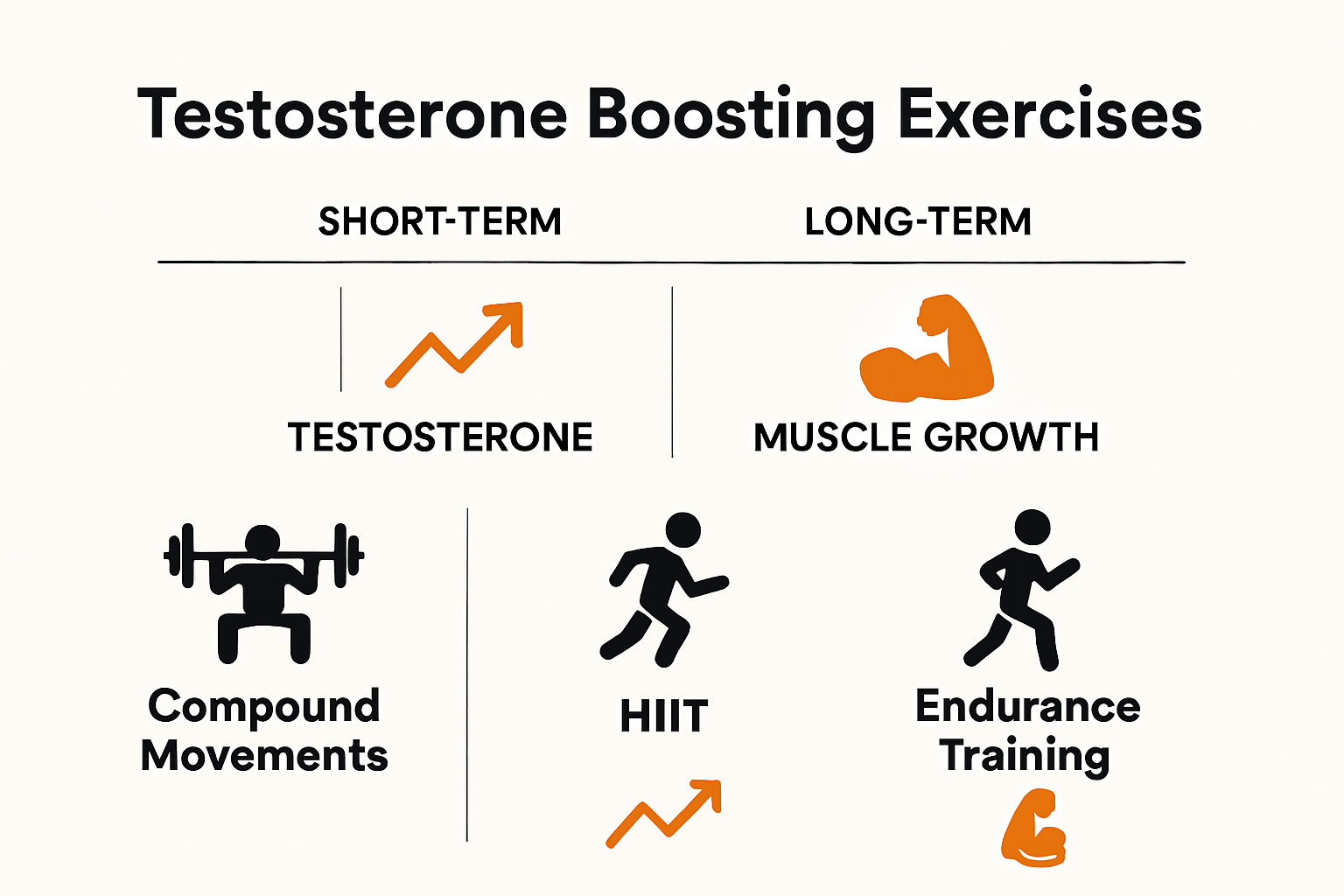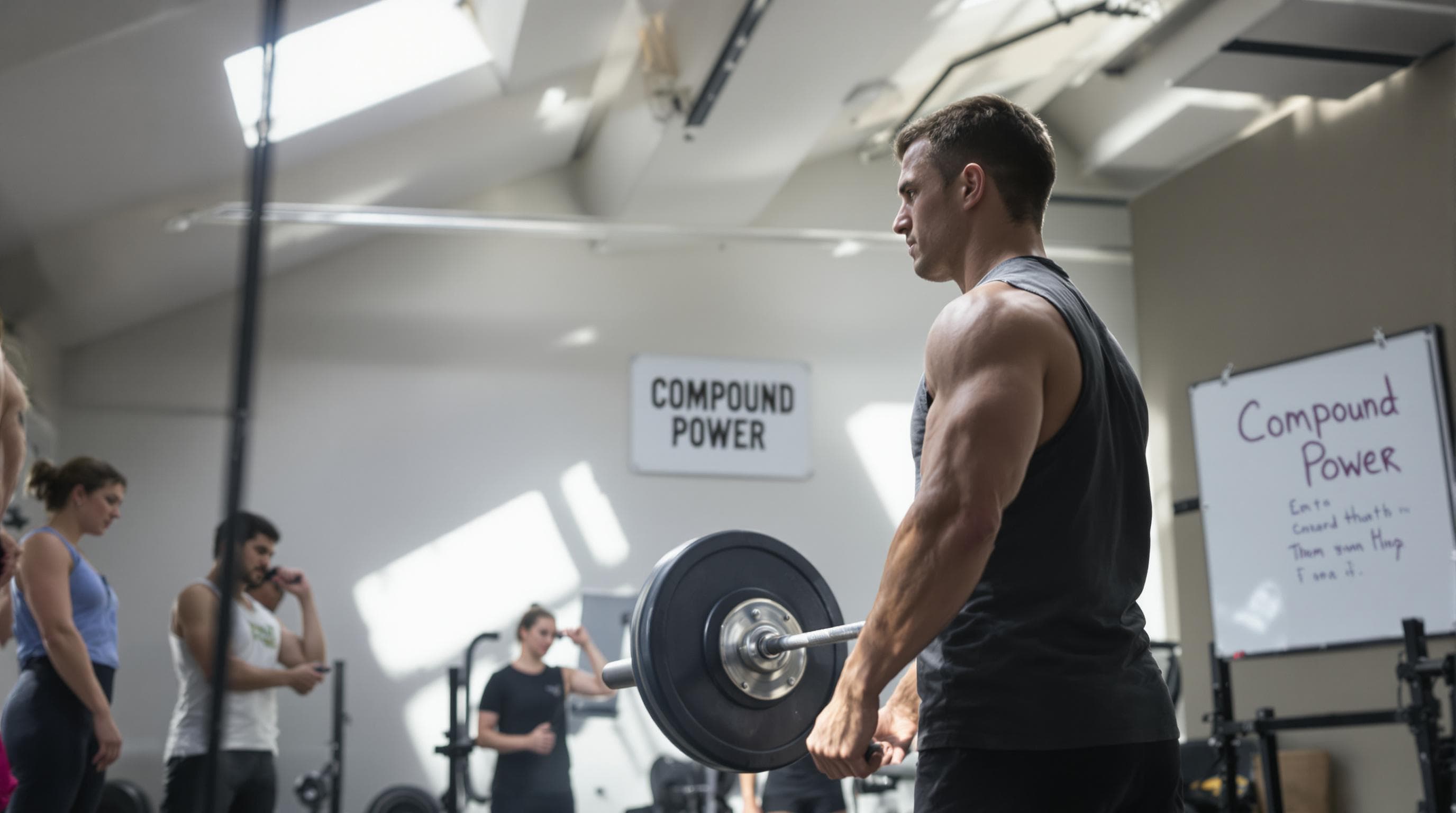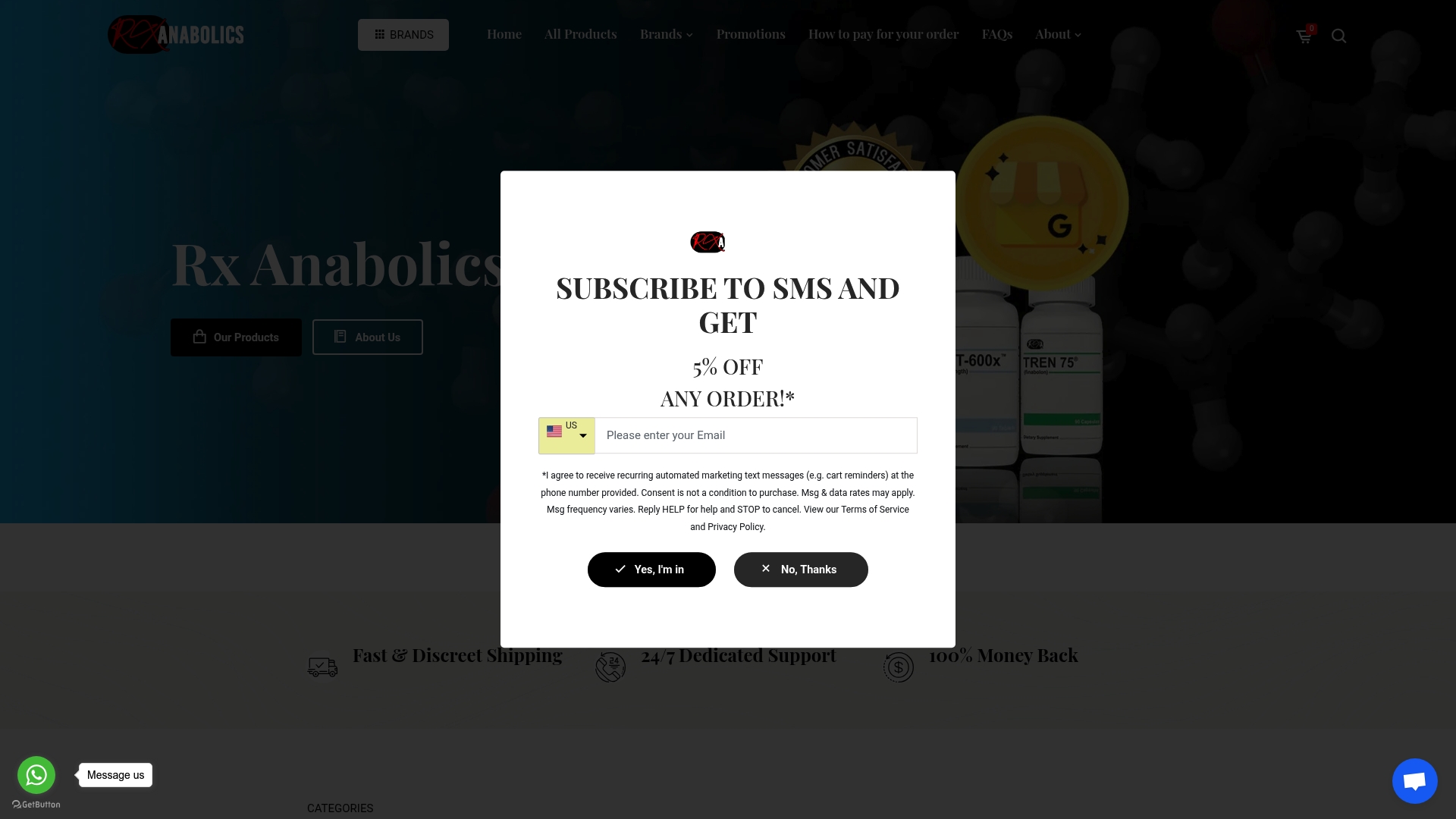Top Testosterone Boosting Exercises for Steroid Users 2025
Lifters performing squats and bench press in bright gym with ‘Testosterone Surge’ banner
Every lifter knows exercise is key for building muscle, but what if it actually changed your hormones too? Here’s the shocker. Research shows compound movements like squats can activate nearly 75 percent of your muscle mass and spark a powerful surge in testosterone. Most steroid users think it’s all about the supplements, yet their workout choices could be making the biggest hormonal impact of all.
Table of Contents
- How Exercise Impacts Testosterone Levels
- Resistance Training And Hormonal Response
- High-Intensity Interval Training And Testosterone
- The Critical Balance Of Exercise And Recovery
- Best Testosterone Boosting Exercises For Users
- Compound Movements: The Testosterone Powerhouses
- High-Intensity Interval Training (Hiit) For Hormonal Optimization
- Strategic Training Considerations
- Tips For Steroid And Testosterone Users
- Holistic Performance Management
- Advanced Hormonal Monitoring
- Sustainable Performance Enhancement
- Mistakes To Avoid With Testosterone Workouts
- Overtraining And Hormonal Disruption
- Endurance Training Misconceptions
- Sleep And Recovery Strategies
Quick Summary
| Takeaway | Explanation |
|---|---|
| Resistance training boosts testosterone | Engaging in compound movements like squats, deadlifts, and bench presses significantly stimulates testosterone production due to the involvement of multiple muscle groups and increased metabolic demand. |
| High-Intensity Interval Training (HIIT) enhances hormonal response | Short, intense exercise bursts followed by brief recovery can effectively increase free testosterone levels, supported by neuroendocrine responses to metabolic stress. |
| Avoid overtraining for hormonal balance | Excessive exercise without adequate rest can lead to decreased testosterone levels due to elevated cortisol, emphasizing the importance of strategic recovery and periodization in training regimens. |
| Nutritional support is crucial | Consuming adequate proteins, healthy fats, and micronutrients is vital for hormonal production and overall performance optimization in steroid and testosterone users. |
| Monitor health parameters regularly | Regular tracking of testosterone levels and other health markers is essential for effective hormonal management, requiring guidance from healthcare professionals for personalized protocols. |

Comparison of testosterone boosting exercises and effects
How Exercise Impacts Testosterone Levels
Testosterone production and exercise share a complex biological relationship that goes far beyond simple muscle building. Understanding how different types of physical activity influence hormonal responses can help steroid users optimize their training strategies and maximize testosterone output.
Resistance Training and Hormonal Response
Resistance training stands out as a powerful stimulus for testosterone production. When you engage in weightlifting or strength training, your body experiences acute hormonal changes designed to support muscle repair and growth. Research from endocrinology journals reveals that the magnitude of testosterone increase depends on critical factors like muscle mass involvement, exercise intensity, and rest periods between sets.
Specifically, compound movements that engage multiple muscle groups simultaneously trigger more significant hormonal responses. Exercises like squats, deadlifts, and bench presses create a greater metabolic demand, which signals your endocrine system to produce more testosterone. The heavier the weights and the more muscle groups involved, the more pronounced the hormonal response.
High-Intensity Interval Training and Testosterone
High-intensity interval training (HIIT) represents another potent method for stimulating testosterone production. Studies among master athletes demonstrate that short, intense bursts of exercise followed by brief recovery periods can significantly improve free testosterone levels.
The key mechanism behind HIIT’s effectiveness lies in its ability to create substantial metabolic stress. These intense workout protocols trigger a powerful neuroendocrine response, prompting your body to release more testosterone as part of its adaptive recovery process. Sprinting, kettlebell swings, and plyometric exercises are excellent examples of HIIT movements that can boost testosterone production.
The Critical Balance of Exercise and Recovery
While exercise can stimulate testosterone production, overtraining represents a significant risk. Medical research clearly indicates that excessive exercise without adequate rest can paradoxically decrease testosterone levels. This phenomenon underscores the importance of strategic training and recovery protocols.
Steroid users must carefully design their workout routines to maximize hormonal benefits while preventing potential negative feedback loops. This means incorporating:
- Periodization: Alternating intensity levels to prevent prolonged metabolic stress
- Strategic Rest: Allowing sufficient recovery time between intense training sessions
- Nutrition Support: Consuming adequate proteins and healthy fats to support hormonal production
The relationship between exercise and testosterone is nuanced. By understanding these intricate biological mechanisms, steroid users can develop more intelligent training strategies that work synergistically with their physiological systems, ultimately supporting optimal testosterone levels and muscular development.
Best Testosterone Boosting Exercises for Users
Maximizing testosterone production through strategic exercise selection requires a targeted approach that goes beyond standard workout routines. For steroid users seeking optimal hormonal response, understanding which exercises trigger the most significant testosterone release becomes crucial.
Compound Movements: The Testosterone Powerhouses
Compound exercises represent the gold standard for testosterone boosting. These multi-joint movements engage multiple muscle groups simultaneously, creating an intense metabolic stimulus that provokes substantial hormonal responses. Research from sports medicine experts highlights three primary compound movements that deliver exceptional testosterone-enhancing benefits:
- Barbell Squats: Engaging nearly 75% of total muscle mass, deep squats trigger massive hormonal cascades
- Deadlifts: Full-body movements that activate posterior chain muscles and stimulate significant testosterone production
- Bench Press: Upper body compound movement that generates substantial anabolic hormonal responses
Each of these exercises recruits large muscle groups, creating metabolic stress that signals your endocrine system to increase testosterone production. The key is performing these movements with proper form, challenging weights, and strategic volume.

Trainer coaching compound lifts with ‘Compound Power’ message on whiteboard
To help visualize the differences between these key compound movements, the table below summarizes their core characteristics and testosterone-boosting impact.
| Exercise | Main Muscle Groups Engaged | % Muscle Mass Activated | Testosterone-Boosting Effects |
|---|---|---|---|
| Barbell Squat | Quads, glutes, hamstrings, core | ~75% | Maximal whole-body hormonal stimulus |
| Deadlift | Posterior chain, back, glutes, legs | ~65% | Strong full-body testosterone surge |
| Bench Press | Chest, triceps, shoulders | ~40% | Significant upper body anabolic effect |
High-Intensity Interval Training (HIIT) for Hormonal Optimization
High-Intensity Interval Training emerges as a scientifically validated method for boosting testosterone levels. Unlike steady-state cardio, HIIT involves short, explosive bursts of maximum effort followed by brief recovery periods. Athletic performance studies demonstrate that this training style can significantly elevate free testosterone concentrations.
Effective HIIT protocols for testosterone enhancement include:
- Sprint intervals
- Kettlebell swing circuits
- Burpee sequences
- Plyometric jump training
These high-intensity protocols create substantial metabolic disruption, triggering a powerful neuroendocrine response that stimulates testosterone production. The shorter duration combined with extreme intensity makes HIIT an efficient strategy for hormonal optimization.
Strategic Training Considerations
Optimizing testosterone boosting exercises requires more than simply performing movements. Intelligent programming becomes essential. Steroid users must balance exercise intensity with proper recovery to prevent potential hormonal downregulation. Medical research warns that overtraining can paradoxically decrease testosterone levels.
Critical considerations include:
- Implementing periodization to prevent metabolic plateaus
- Ensuring adequate rest between intense training sessions
- Maintaining proper nutrition to support hormonal production
For those interested in exploring additional testosterone enhancement options, check out our comprehensive testosterone support protocols.
Ultimately, the most effective testosterone-boosting exercise strategy combines scientifically validated movements, intelligent programming, and a holistic approach to physical performance. By understanding the intricate relationship between exercise and hormonal response, steroid users can design training protocols that maximize their physiological potential.
Tips for Steroid and Testosterone Users
Navigating the complex world of testosterone and anabolic steroids requires more than just understanding exercise protocols. Strategic implementation, comprehensive health monitoring, and intelligent approach can significantly impact your performance, safety, and long-term physiological outcomes.
Holistic Performance Management
Successful steroid and testosterone usage transcends simple supplementation. Research from veterans health resources highlights the critical importance of a multifaceted approach to hormonal optimization.
Key strategies for comprehensive performance management include:
- Balanced Training: Combining aerobic and resistance training to maximize testosterone production
- Nutritional Support: Consuming adequate proteins, healthy fats, and micronutrients
- Recovery Protocols: Implementing strategic rest and active recovery techniques
Users must recognize that testosterone is not just about muscle building but represents a complex hormonal ecosystem requiring precise management. Learn more about our comprehensive steroid supplement strategies.
To clarify the holistic strategies recommended for steroid and testosterone users, the following table presents key pillars alongside their benefits.
| Strategy | Purpose and Benefits |
|---|---|
| Balanced Training | Maximizes testosterone, supports cardiovascular health |
| Nutritional Support | Fuels hormone production, enables muscle repair and recovery |
| Recovery Protocols | Reduces risk of overtraining, sustains long-term performance |
Advanced Hormonal Monitoring
Intelligent hormonal management requires regular and comprehensive health monitoring. Clinical studies demonstrate that middle-aged adults utilizing high-intensity training experienced significant testosterone increases when implementing structured protocols.
Critical monitoring parameters include:
- Total and free testosterone levels
- Liver function markers
- Lipid profile assessments
- Cardiovascular health indicators
Professional guidance becomes paramount. Working with endocrinologists and sports medicine specialists allows users to develop personalized protocols that minimize potential risks while maximizing physiological benefits.
Sustainable Performance Enhancement
Long-term success in testosterone optimization demands a nuanced, sustainable approach. Medical research reveals that resistance training can effectively restore age-related hormonal declines, emphasizing the importance of intelligent, progressive training strategies.
Sustainability factors to consider:
- Cyclical usage protocols
- Periodic health assessments
- Adaptive training methodologies
- Psychological readiness and stress management
Steroid and testosterone users must view their journey as a comprehensive lifestyle optimization process. This means moving beyond short-term gains and focusing on long-term health, performance, and personal development.
Ultimately, success lies in understanding that testosterone enhancement is a sophisticated biological intervention requiring knowledge, discipline, and a holistic perspective. By integrating scientific insights, personalized monitoring, and intelligent training approaches, users can unlock their physiological potential while maintaining comprehensive health and wellness.
Mistakes to Avoid with Testosterone Workouts
Navigating testosterone-focused workouts requires more than enthusiasm. Strategic planning and understanding potential pitfalls can dramatically impact hormonal optimization and overall performance for steroid users.
Overtraining and Hormonal Disruption
One of the most critical mistakes steroid users make involves pushing their bodies beyond sustainable limits. Research from medical experts reveals that overtraining can catastrophically disrupt hormonal balance. Excessive exercise triggers elevated cortisol levels, which directly counteracts testosterone production.
Common overtraining indicators include:
- Persistent muscle fatigue
- Decreased workout performance
- Prolonged recovery periods
- Mood fluctuations and irritability
- Compromised immune function
Steroid users must understand that more exercise does not equate to better results. Intelligent programming requires strategic rest, recovery, and understanding individual physiological limits.
Endurance Training Misconceptions
Excessive endurance exercises represent another significant mistake in testosterone-focused training strategies. WebMD medical research demonstrates that prolonged cardiovascular activities like marathon running or extended cycling can dramatically suppress testosterone levels.
Key considerations for preventing endurance-related testosterone suppression:
- Limit continuous cardio sessions to 45-60 minutes
- Incorporate high-intensity interval training (HIIT)
- Balance cardiovascular work with resistance training
- Monitor total training volume and intensity
The goal is creating a harmonious training approach that stimulates testosterone production without triggering hormonal downregulation.
Sleep and Recovery Strategies
Often overlooked, sleep represents a fundamental component of testosterone optimization. Harvard Medical Research emphasizes that inadequate sleep can precipitate significant hormonal disruptions.
Critical sleep and recovery recommendations include:
- Maintaining 7-9 hours of quality sleep nightly
- Establishing consistent sleep schedules
- Creating dark, cool sleeping environments
- Minimizing electronic device exposure before bedtime
- Implementing active recovery techniques
For comprehensive insights into optimizing your testosterone workout strategy, explore our advanced supplementation protocols.
Successful testosterone-focused training transcends simple exercise selection. It demands a holistic approach understanding complex physiological interactions, individual biochemical responses, and sustainable performance strategies. By avoiding these common mistakes, steroid users can develop intelligent, science-driven training protocols that maximize hormonal potential while preserving long-term health and performance capabilities.
Frequently Asked Questions
What exercises can boost testosterone levels for steroid users?
Compound movements such as barbell squats, deadlifts, and bench presses are highly effective for boosting testosterone levels due to their engagement of multiple muscle groups and the high metabolic demand they create.
How does High-Intensity Interval Training (HIIT) impact testosterone production?
HIIT can significantly enhance testosterone levels. Short, intense bursts of exercise followed by brief recovery periods create substantial metabolic stress, prompting the body to release more testosterone as part of its adaptive response.
What should steroid users avoid to maintain healthy testosterone levels?
Steroid users should avoid overtraining, as excessive exercise without proper rest can elevate cortisol levels, leading to decreased testosterone. It’s also important to limit prolonged endurance exercises that can suppress testosterone levels.
How crucial is recovery for testosterone levels in steroid users?
Recovery is critical for maintaining optimal testosterone levels. Adequate rest between workouts, nutrition support, and managing sleep can prevent hormonal disruptions, ensuring sustained performance and hormonal balance.
Transform Your Testosterone Training With Us
Are you hitting your limits with squats and HIIT, but still struggling to unlock your full hormonal potential? The article dives deep into how the right training moves can fuel testosterone production but real progress often gets blocked by inconsistent results, fatigue, and the risk of overtraining. Many users face the frustration of a plateau despite mastering compound lifts and recovery routines. You deserve a proven way to build on your hard work and see continuous gains — not setbacks.

https://rxanabolics.com
Upgrade your regimen with smart supplementation and world-class support. At Rx Anabolics, we offer premium, rigorously tested products designed to complement every aspect of your training. Every purchase rewards you with bonus coins for free products, and our dedicated team stands behind your results. Tired of hitting a wall? Visit our website now to explore advanced solutions that power up your testosterone and help you achieve your next breakthrough. Start seeing real performance changes today with Rx Anabolics.




Leave a Reply